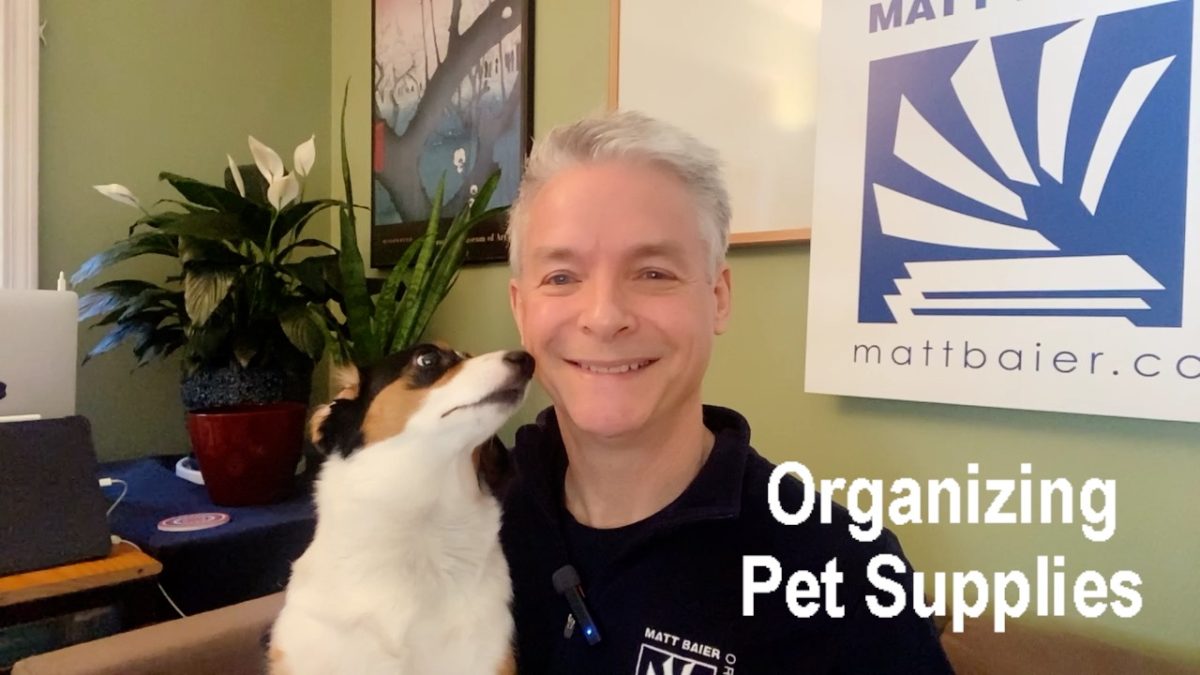Originally from Matt Baier’s Organizing Works Newsletter, December 2008
It’s only natural to want to make a fresh start in the upcoming New Year. Now is the perfect time to clear out your stuff from 2008 and create space for the new possibilities of 2009. This installment of Organizing Works is dedicated to getting rid of those old papers in your home or office. Sure, it may seem like an overwhelming task, but it’s surprisingly manageable if you know what to do and what NOT to do. Here are three tips for starters:
1. Sort fast!
To get through your initial purge of accumulated paper, forget your current filing system, limit yourself to four basic categories, set a timer, and work FAST. Your odds of getting through a backlog of paper increase exponentially if you remove the decision barriers and sort fast. Set yourself up with a comfortable work surface and mark four boxes with the labels Running, Sitting, Sleeping, and Dead. Running Files are all the active projects on your to do list that you want OUT where they can be seen and Dead Files are pretty self explanatory. The most significant distinction here is between Sitting Files and Sleeping Files. Sitting files are what’s current in 2008 (and soon in 2009) and a few older records that you may still need quick access to. The box you collect of Sitting Files then becomes a To-File box when you’re done. Sleeping Files are basically archives, files that you may never need again, but you need to hang on to JUST IN CASE. The reason this is such an important distinction is that given the choice between “keep” and “toss” one is more inclined to keep for fear of deciding too quickly and making a mistake, but with the Sleeping File category it is OK to keep something just-in-case so long as it is stored more remotely. It then becomes much easier to toss that box after realizing you haven’t needed any of its contents in seven years, or whatever time span you are comfortable with. This practice allows you to free up a significant amount of more immediate file space and office space AND it allows you to make your decisions FAST. Just be sure to clearly label your boxes in case a sleeping file does need to be woken up!
2. Ask why, not where.
The answer to “where should this file go?” can be answered with another question: “WHY are you keeping it?”
There are essentially three reasons why to keep a file:
- Information
- Statements
- Records.
These Sitting Files, or current and accessible files, should all fit comfortably in 2 file drawers or less in a typical household. Before you stuff your next paper into your file cabinet, ask if it represents information you may need in the FUTURE, or a statement for your PRESENT tax year, or a record from your PAST. If it’s none of the above you may not need it at all. It helps to ask yourself out loud. e.g. “Why am I filing this thick investment prospectus?” “Because I might want to read it when I have some free ti-Aw, who am I kidding?” Just because someone gives you something, doesn’t mean you have to keep it. Stopping excess files at the gate will keep your files manageable. The other practice that will help is graduating your supporting tax material from Sitting Files to Sleeping Files after you settle your taxes, so you can free up space in your file cabinet for next year’s statements. This process of circulation not only addresses WHY you keep a file, but HOW LONG. Need some specifics on how to turn this theory into practice? Check out my May 2007 Newsletter Focus on Filing 2: User Friendly Filing.
3. EZ pass for the Dead Files.
OK, I won’t be surprised if you don’t think you need instruction on how to toss garbage, but guess what. These days, proper disposal requires some real know-how! An essential step in effective paper management is to make the disposal process so easy, it feels like you’re cheating. If your little trashcan is filled to overflowing and you’re not clear about what to shred and what to recycle, where is your paper going to go? Where else but your desk and floor. Free up that traffic on your productivity highways and give the garbage an EZ Pass. Start with a large recycling bin for recyclable paper and get clear on what information you need to shred. If you shred a lot or have a backlog, that little home office shredder just won’t cut it. These days professional shredding services are more affordable than ever. The one I highly recommend is Shred Station Express. You can check them out at http://www.shredstation.com/ Call (203)256-8022, mention code NAPOCT02 and you save 10%.
Please Share With Your Community
















